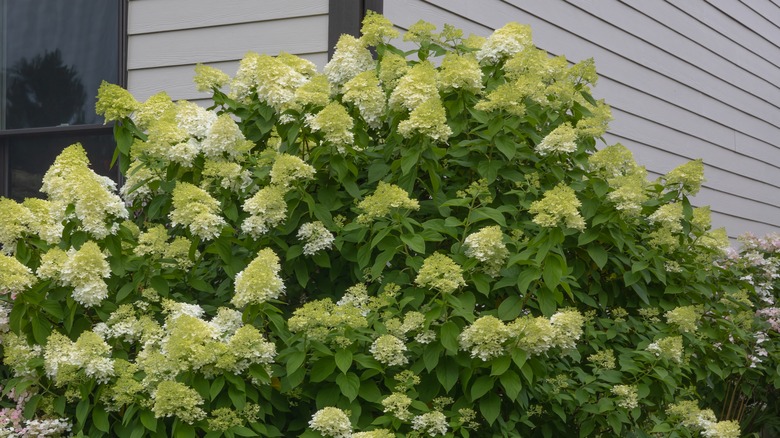Garden
Sandy Baker
Limelight hydrangeas are impressive in any garden, with their big blooms in a pale lime color. While they aren’t difficult to care for in most situations, a few tips on proper sunlight and watering can help encourage the growth and development of these plants’ full, rounded panicles, or flower clusters. For proper growth, position these plants 4 to 5 feet from each other at least, and in full sun in the northern regions and full morning sun in the southern areas of the United States. They need soil that drains well but stays moist though never soggy. These flowering plants are quite adaptable to many conditions but still do well when they’re mulched and placed in nutrient-rich soil.
As for caring for limelight hydrangeas, a bit of effort can keep them blooming long into the season. Prune them in the late winter months or wait until the spring to help foster new growth and blooms throughout the summer and spring months, but be careful. Without pruning, they can grow to a height of 6 to 8 feet. The good news is these beautiful flowers are perfect for cutting to bring them into your home for added beauty in any space. There are a few more considerations for growing hydrangeas in your garden this year.
Tips for a long season of blooms and growth

Molly Shannon/Shutterstock
Though some hydrangeas prefer shade, limelight hydrangeas do better in full sun, especially in northern climates where they can get a full 8 hours of direct sunlight. In the south, temperatures can get too high in the late afternoon, so choosing a space with good morning light and afternoon shade could be a better option. They tend to do best in USDA hardiness zones 3 to 9.
Then, consider the nutrient needs of these hydrangeas. If you’re planting them, loosen up the soil and remove excess clay to replace it with a looser material. A good starting fertilizer for plants could help improve soil quality as well. Using a 10-10-10 plant food fertilizer on a routine basis once planted provides the hydrangeas with the nutrients they need. They aren’t too picky about a balanced pH soil, which is another reason they are an excellent choice for many gardens.
A common cause of disease is poor soil drainage, which causes root rot to set in. Plan to water these plants well when planting and mound soil to create a hill to encourage drainage. As for watering, limelight hydrangeas are more forgiving than others that seem to need constant water. They are somewhat drought-tolerant but do best when the soil is kept moist. Use mulch to help with retaining more of that moisture when possible. Most importantly, don’t overwater. Saturated soil that doesn’t drain is dangerous for these beauties.
Caring for limelight hydrangeas in the fall

Edita Medeina/Shutterstock
Don’t overlook the benefits of cutting a few of the blooms to bring them indoors to liven up your living space. Just do so by cutting long stems at an angle. Like most plants, they will begin to stop blooming around the middle of fall as temperatures drop, but some can continue to bloom much later. There’s not a lot of pruning necessary, especially in the fall, though pruning off new wood growth could help you maintain the desired height and sizing for these sometimes fast-growing plants. Don’t prune them for winter until all the blooms have fallen back.
If you notice concerns with the hydrangeas throughout the year, fall is a good time to make some changes. You can transplant them in late fall or the early spring. If transplanting them to a new location, ensure the best possible drainage and loose soil for the best results. They make fantastic container plants (though you’ll need to keep them trimmed back and in a large enough pot) or can be used for a stunning hedge along the side of the home. Unlike other varieties, limelight hydrangeas are easier to grow, but you’ll still want to avoid common hydrangea planting mistakes.



